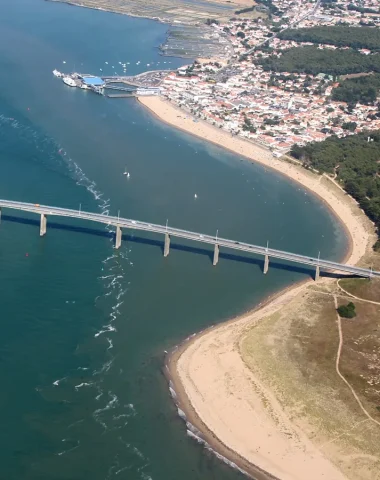What to visit on Ile d’Yeu
Yeu island is situated about 17km from the vendéen coast and 25km from the port of Fromentine.
It has a population of around 5000 and is lively and welcoming all year round. Although completely cut off from the mainland around 5000 years ago, numerous prehistoric discoveries show that there were inhabitants on the island from the Neolithic period. Ile d’Yeu is proud of its history and protects its heritage carefully. The variety is astonishing and includes chapels and churches, a medieval castle, a citadel and lighthouses. There are numerous small fields surrounded by low stone walls and windmills which, though no longer in use, all bear witness to the rural past of the island in the 19th century. There is currently a trend towards re-developing many traditional activities with small private initiatives such as market gardening, livestock rearing and production.
Its main port – Port-Joinville – is renowned for the quality of its fish and has succeeded in maintaining its dynamism despite an ongoing reduction in the number of fishermen and boats. Its market auction takes a large proportion of the catch from the flotilla of 43 vessels with the main species being sole, monkfish, sea-bass, hake and white tuna.
With the exception of Port-Joinville, the urbanisation of the island in hamlets has kept the traditional architecture, which is one of the particular appeals of the island. In this way the low built houses with tiled roofs and painted shutters allow the villages to maintain an identity which you can see as you wander up and down the little narrow streets.




Ile d’Yeu is a real jewel of the Vendée heritage and is an island with many features.
It’s a treasure for nature lovers with its size (10km long by 4km wide) and its network of pathways making it an ideal place for walking or cycling. As it’s situated on the divide between the Armoricaine Massif and the Aquitaine coast, Ile d’Yeu brings together a great variety of landscapes on its 23 square km of land. On the East coast between Port Joinville and Les Corbeaux are long beautiful beaches and coastal dunes fixed in place by a woodland of resinous trees. To the South, from the Pointe des Corbeaux to the Pointe du But, the coast is rocky and is called the Wild Coast (Côte Sauvage). The beauty of its landscape is truly breath taking with cliffs and coves which are bordered by weather beaten grass. This is transformed in Spring each year by a blanket of Sea Thrift/Sea Pinks (*Armerias). These landscapes will leave you with unforgettable memories of your day on Ile d’Yeu.
As part of your discovery of Ile d’Yeu, why not have a look at the Vieux Chateau (Old Castle) from the 14th Century, Port-Joinville, St Sauveur and the charming little port of La Meule with its chapel. Try the prune tarts or the ‘betchets’ (traditional biscuits), or swim in the sea at Anse des Soux which is one of the prettiest coves. Ile d’Yeu is an island to discover all year round!

Visit the port of Fromentine
The ferry port didn’t exist 100 years ago as it only dates back to 2007. For many years there were no facilities for the arrival and departure of the ferries. The boats moored either on the beach or at the other community port on the route de Beauvoir. During the development of Fromentine, it was decided to build a pier – a jetty which would allow the boats to pull in and out. From this jetty you can go to Ile d’Yeu or Ile de Noirmoutier which is just opposite. It is however, no longer necessary to take a ferry to Noirmoutier. The bridge was built at the beginning of the 1970’s and it’s 583metres long.
From 1870 there was a steam boat called ‘La Vendée’ that went to Ile d’Yeu. When this service began everyone was delighted. In 1901, the steam boat which went to Ile d’Yeu took less than 2 hours in good weather. In 1903 from July to September, the boats going to Ile d’Yeu took around 2800 passengers. In exceptionally bad weather it could take up to 12 hours to make the crossing to Ile d’Yeu.
If you’ve a few hours to spare in Fromentine before you board your ferry for Ile d’Yeu, head to the Tourist Office where you will find a booklet called “My day in La Barre de Monts / Fromentine.” This will enable you to find out more about the history of the port and the seaside town of Fromentine.

















